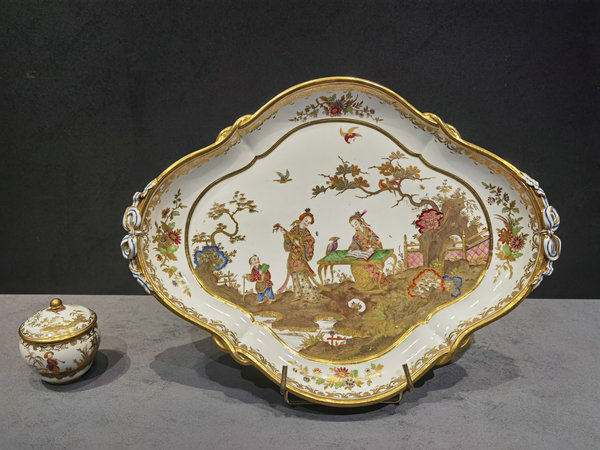A fine legacy forged in friendship
A long-awaited Beijing exhibition celebrating six decades of diplomatic ties between China and France sheds fresh light on centuries of exchanges, Wang Kaihao reports.
By Wang Kaihao | CHINA DAILY | Updated: 2024-04-11 07:33

The Dragon and the fleur-de-lis
Wang's reference to the respective royal emblems of the two countries was not just metaphor. One of the highlights of the exhibition, a gilt copper pocket watch from the collection of the Palace Museum, offers physical evidence of that same poetic view of the relationship.
With a fleur-de-lis in the center of the watch face and Louis XIV's portrait on its case, the movement is covered by a shield decorated with a dragon with five-fingered claws, a motif that belonged exclusively to Chinese emperors. Engraved with the name of a Parisian studio, it is believed to have been a personal gift given from the Sun King to his Chinese counterpart, according to Guo Fuxiang, a researcher at the Palace Museum and chief Chinese curator of the exhibition.
Another key exhibit echoes the significance of the watch. It is a silver ewer with reliefs of auspicious Chinese patterns and motifs, including flowers, birds and pagodas. Produced around 1680 in China, it was presented to Louis XIV by an envoy of Siam (today's Thailand). It survived later social upheavals and is now a part of the collection of the National Museum of the Palaces of Versailles and Trianon.

"A clock and a pitcher, the two artifacts demonstrate the mutual respect and admiration the two countries had for each other's cultures," Christophe Leribault, president of the Public Establishment of the Palace, Museum, and National Estate of Versailles, emphasizes. "And the legacy of such exchanges continues."
Guo says that each exhibit was carefully chosen to reflect interaction between the elites of China and France, a lesser-known chapter in this history. As such, many special items in the inventory of the Palace Museum have an opportunity to be displayed, revealing a less well-known side to royal life in the Forbidden City.
For example, French mathematicians stirred Emperor Kangxi's interest in geometry. A 1690 copy of Euclid's Elements of Geometry — handwritten in the Manchu script used by Qing royals — is the only surviving edition of its kind, and provides a key reference for the studies into the history of mathematics.
- Exhibition lauds cases of solid work to build beautiful, better China
- Sound of the Forbidden City project showcases China's rich musical heritage
- Overseas hanfu clubs serve as cultural ambassadors
- Tuning in to Beijing's charms
- China to be guest of honor for Intl Kite Festival in Berck-sur-Mer in April
























